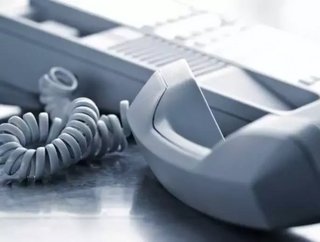9 Ways to Solve Hospital Communication Problems that Inhibit Patient Care

Proper communication amongst doctors, nurses and all care staff is vital to optimum patient care and satisfaction. Spok, a leader in critical communications in health care, compiled the nine biggest problems occurring in hospital communication today and ways to solve them.
1. Patient test results may be delayed getting to the right doctor.
The Joint Commission and other health care authorities have identified delays in the communication of critical test results as a major problem for patient safety. According to Spok, inefficient handling of results also contributes to higher costs of care, longer length of stay and increased risk of litigation.
Solution: Set up instant text notifications or have vital results be flagged in the EMR system.
2. Doctors may not be able to get in touch with another doctor to discuss patient treatment plans.
Reaching the right person on the right device at the right time is essential to patient care and safety. When personnel and schedule information is inaccurate or not readily accessible, critical messages can go to the wrong person or an office phone rather than a pager or cell phone.
Solution: Online staff directories or on-call scheduling calendars can solve this problem.
3. A code STEMI or other code call may take a long time and be disorganized.
In an emergency, staff rely on fast and accurate notifications of critical information. Confusion can sometimes emerge when information is choppy or sent in intervals.
Solution: An emergency notification solution will help transit information quickly and reliably.
4. HIPAA violations may occur if patient details are transferred without encryption.
As hospitals continue to search for methods to transfer patient information quickly, safety always needs to be at the forefront of requirements. Sensitive information being sent unencrypted could result in a HIPAA lawsuit.
Solution: Secure texting apps are now available that ensure devices don’t spread unprotected patient information.
5. Not having a paging system for backup may make an emergency situation even more complicated.
Paging has been integral to hospital workflows and critical response processes for decades and its value remains high.
Solution: Paging is highly reliable and cost effective. Lay the groundwork that will give critical communications the best chance of getting through.
6. Incoming calls may get misdirected when being processed.
Processing calls need to be simple or else calls can get sent to wrong department leading to both staff and patient frustration.
Solution: Set up an operating system with staff and launch code calls that can process routine requests including directory assistance, transfers and paging.
7. Patients may lose necessary sleep for recovery because of loud activity noise.
Noise on patient floors can be distracting and can affect the recovery process for patients.
Solution: Fast-tracking patient monitoring alarms and nurse call requests can greatly diminish the amount of noise on a hospital floor as they can go straight to an on-duty staff member’s pager, cell phone or other device.
8. Nursing staff might walk an unnecessarily long distance during the course of their shift.
Some estimates put the distance a nurse walks during the course of his or her shift at two miles, which can lead to fatigue while on the job.
Solution: A nurse call system can deliver calls to nurses directly without having them to stop by the nursing station first. A callback extension for the patient can also allow the nurse to speak with the patient directly to determine his or her need without having to visit the patient to do so.
9. Contacting a doctor when he is not on-call can inhibit his personal time.
When the proper balance between allowing others to access a physician and protecting his or her personal time isn’t found, this can result in a physician’s frustration and patient care can suffer.
Solution: Enable staff to call one local number and reach the right on-duty clinician according to a physician’s established preferences.






